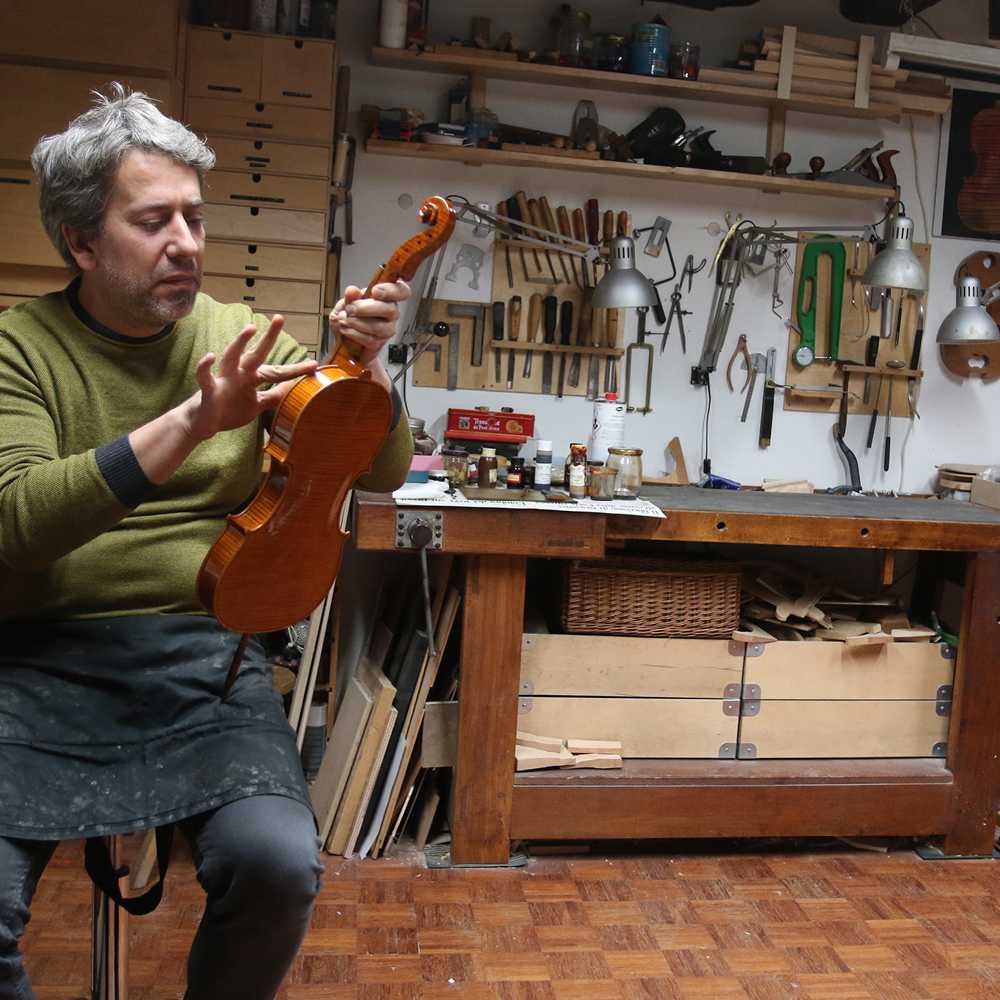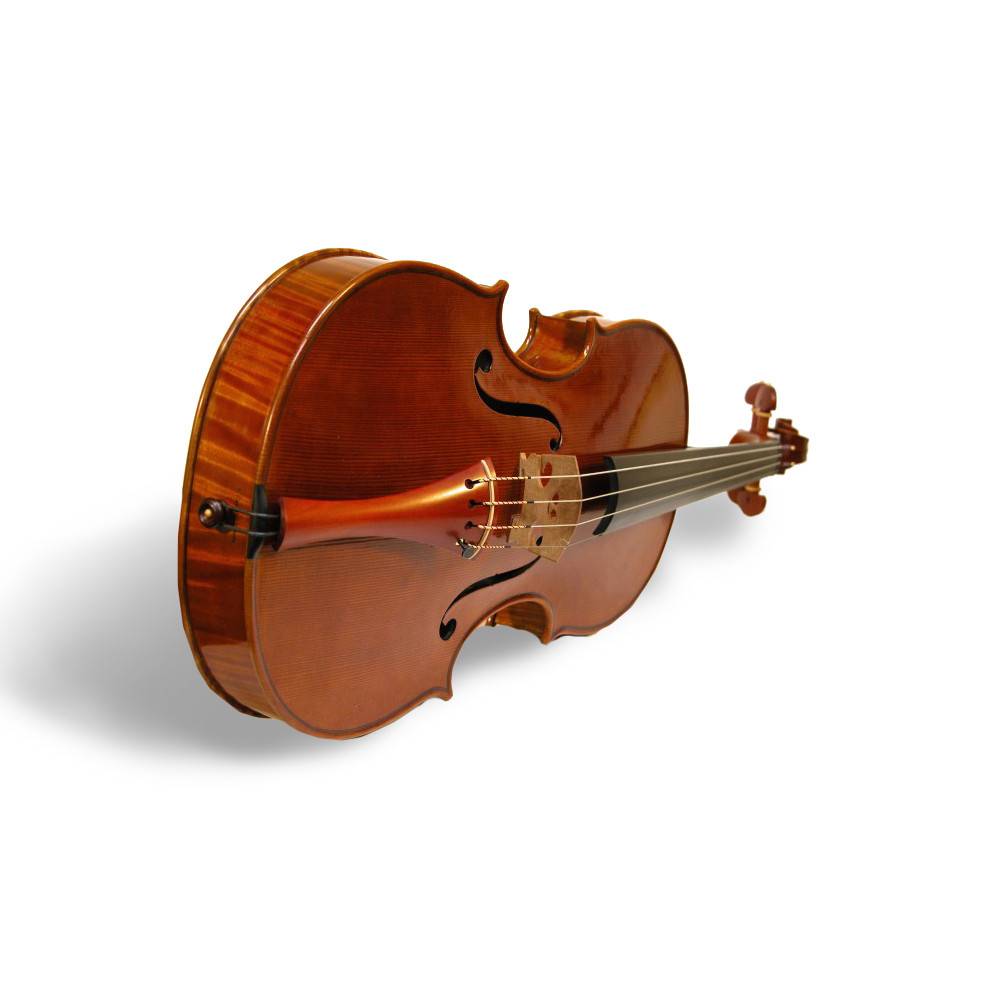Riccardo Guaraldi
Luthier
Riccardo Guaraldi
Luthier
"The magic is that of the musician who plays; in the luthier's work there is a lot of philosophy but then there must also be the concreteness of a perfect mechanical structure."

Some of the violins played in the most important Italian and European theaters arrive and depart from a "corte sconta" in the Castello district. To welcome them is Riccardo Guaraldi, a luthier who, before opening his workshop in Venice, listened to a lot of music in his family, growing up with a passion for manual work. In the '90s, a decisive factor was his encounter with a self-taught luthier who guided him to choose the luthier school in Milan. From that moment on, years of work and study followed with important luthiers in the hinterland of Veneto and a workshop of his own in the hills of Treviso before opening the one in Venice. The choice of a city that was home to some of the most important luthiers between the sixteenth and eighteenth centuries, organized in the guild of marzeri. Today, luthiers design a violin using 3D graphics programs, but in Guaraldi's studio you can still feel the atmosphere of the Venetian workshops of the past, with the scent of precious seasoned maple and fir woods, woods that are sought after from Val di Fiemme as far as Montenegro. In addition to the selection of the wood in the name of the balance between elasticitỳ, weight and modes of vibration, Guaraldi mathematically calculates the right proportions between knots and antinodes, the external bowing, chooses the hardware and weighs an infinite number of other variables to prepare the instrument up to the final phase of tuning. In building new violins, Guaraldi adopts the classical Cremonese construction technique, trying to imitate the ancient sonorities, while in the restoration he aims to use materials suitable to replace any missing parts with particular attention to the chemistry of the varnishes, the retouching techniques and the recovery of structural modifications-depressions. The luthier also follows the life of his creations once they have left his workshop. Sometimes it is the violin or the viola that returns to the workshop for a visit or a check-up, but other times it happens that it is the luthier who listens to those pieces of wood assembled in his own small workshop in a large theater.
 Castello 6282, Fondamenta Felzi
Castello 6282, Fondamenta Felzi
DISCOVER ALL THE ARTISANAL PRODUCTS
Showing 1-1 of 1 item(s)


